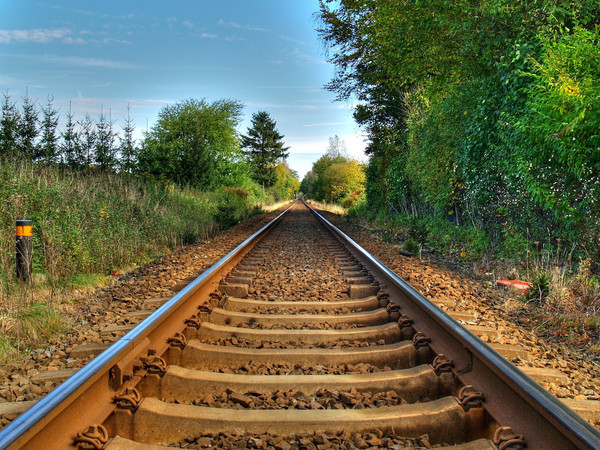
The sat firmly in the metal chair, preventing any movement. This illustration depicts how chairs were utilized to secure rails. Spikes became commonplace in North America in the 19th century, and spread throughout the world as the standard for railroad construction. These implications were paramount when planning the construction of either a new railroad, or maintaining an existing right of way. The railroad spike has evolved since the early days of the railroad in order to keep the track in gauge and prevent lateral motion. Steel rails are ideal for the modern rail industry, as they are increasingly stronger than iron rails, and can handle the immense weight of modern trains. In early to mid 19th century, “T” style steel rails became commonplace, and have become the standard worldwide. However, as locomotive technology progressed during the 19th century, heavier and more powerful locomotives were built, and the cast iron rails were soon replaced with stronger wrought iron rails. However, when locomotives were introduced, the wooden rails broke under their weight, and cast iron rails were introduced. In the late 18th century, rails were constructed utilizing wood, as many railways utilized horses for motive power. Rails have been constructed of many materials throughout the evolution of rail travel.

Oftentimes, the percent of carbon within the rail is 0.7%, while the amount of manganese is 1%. Rails are oftentimes rolled steel shaped like an “I” beam, and are composed of a combination of carbon and manganese. Rails are the component of track in which the train’s wheels make contact. Interestingly, although the spike is utilized to keep the rail in gauge, it is designed to leave some movement, as the spike is not implemented as firmly to the sleeper as the tie plate, due to not needing to support the rail vertically. The size of spikes vary, however, the most common types of spikes are between 9/16 to 10/16 in width, and 5 1/2 to 6 inches long. Iron chairs proved expensive and were relatively heavy however, and eventually were phased out in favor of spikes. The technology of the railroad spike was primarily utilized in the United States in the 19th century, as other countries preferred the use of iron chair to secure rails. Invented by Camden & Amboy president John Stevens, the spike was designed with an offset head, which is meant to secure the rail, and prevent any lateral movement or shifting, especially under the weight of a train. Throughout the years of innovation in railroad technology and infrastructure, the manner in which rails were fastened to the sleepers evolved into the infrastructure of the modern day. The most prominent use of spikes in this manner was the completion of the transcontinental railroad in 1869, where Leland Stanford drove a golden spike into the tie plate to complete the line. In many instances, spikes have been utilized to mark momentous occasions, such as the competition of a revolutionary rail entity. Various innovations in fastener technology were introduced in the following years, such as the “T” rail, which was bolted directly to the sleeper, and later bolted to a tie plate, which is common practice in the modern day. In addition to spikes, tie clips have become commonplace on various high speed rail lines, such as France’s TGV system. Some of the most popular type of rail during the late 18th and early 19th century was “fishbelly” rail, which was quite revolutionary at the time. Iron plate-ways were also commonplace on many early mine railways, as they were inexpensive to construct, and horses could easily haul carts to the canals.Īs the early railways continued to evolve iron rail containing flanges became commonplace, and utilized and sat on a “chair”, holding the rail in place. These types of rails were commonly utilized in mines or on other early horse drawn railways. During the primitive days of the railroad, wooden rails were commonplace, thus, wooden pegs or nails would oftentimes be seen holding rails in place. HistoryĪ fastener of a sort has been commonplace on the rails since the early 19th century. Each component contributes to the vital infrastructure, ensuring rails remain in place, ensuring any lateral motion is prevented.

What are railroad tracks made of? Railroad tracks are made of rails, spikes, and railroad ties. Since the railroad’s genesis in the 1830s, there has always been a type of fastener that has held the rail firmly onto the tie plate, preventing the motion known as lateral movement, which is when an object, in this case the rail, moves from side-to-side, therefore, bringing the track out of gauge.


 0 kommentar(er)
0 kommentar(er)
